Regularly eating the following groups of vegetables, combined with a healthy lifestyle, we can completely reduce visceral fat and have a slim waist.
Vegetables rich in soluble fiber
Soluble fiber absorbs water in the stomach and turns into a gel-like substance. It helps prolong the feeling of fullness and slows down digestion and energy absorption, according to the Eating Well website (USA).
A study by Wake Forest University (USA) shows that for every 10 grams of soluble fiber consumed per day, visceral fat will be reduced by about 3.7% within 5 years. This is because soluble fiber helps improve the diversity of intestinal bacteria, creating short-chain fatty acids, which help speed up the process of burning belly fat. Vegetables rich in soluble fiber are Brussels sprouts, beans, sweet potatoes, oats and oranges.
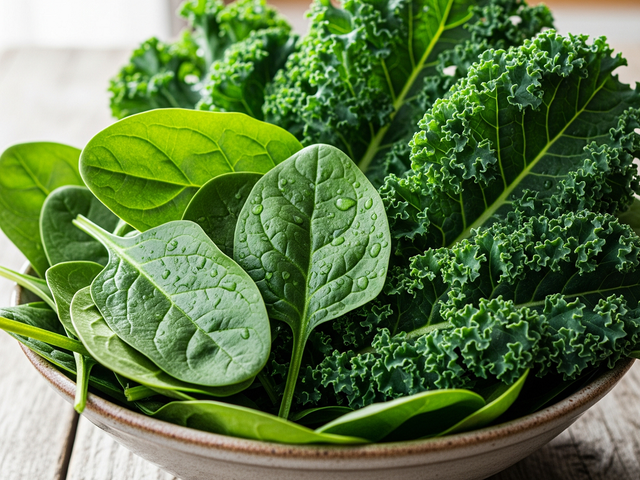
Spinach and kale contain nutrients that help support visceral fat loss.
PHOTO: AI
Spinach
Many nutritionists say spinach is one of the best vegetables for reducing visceral fat. This benefit is largely due to its high levels of carotenoids, such as lutein and zeaxanthin. These promote fat oxidation and reduce inflammation.
Spinach also provides a significant amount of fiber. Just 1 cup of cooked spinach provides 4 grams of fiber, or 14% of your daily needs.
Vegetables rich in antioxidants
A diet rich in antioxidants and anti-inflammatory substances such as carotenoids, vitamins A, C, E, and polyphenols can help reduce visceral fat. These nutrients help reduce oxidative stress and inflammation. Plants rich in these nutrients are often red in color, such as carrots, sweet potatoes, and red bell peppers.
Non-starchy vegetables
A study published in the Journal of the Academy of Nutrition and Dietetics found that eating plenty of non-starchy vegetables, especially dark green and yellow vegetables, can help reduce visceral fat volume by up to 17% and reduce liver fat.
Popular non-starchy vegetables are spinach, kale, bok choy, bok choy, broccoli, cauliflower, cucumber, tomatoes or bell peppers, according to Eating Well.
Source: https://thanhnien.vn/an-rau-gi-de-giam-mo-noi-tang-185250813233451686.htm



![[Photo] Parade to celebrate the 50th anniversary of Laos' National Day](/_next/image?url=https%3A%2F%2Fvphoto.vietnam.vn%2Fthumb%2F1200x675%2Fvietnam%2Fresource%2FIMAGE%2F2025%2F12%2F02%2F1764691918289_ndo_br_0-jpg.webp&w=3840&q=75)
![[Photo] Worshiping the Tuyet Son statue - a nearly 400-year-old treasure at Keo Pagoda](/_next/image?url=https%3A%2F%2Fvphoto.vietnam.vn%2Fthumb%2F1200x675%2Fvietnam%2Fresource%2FIMAGE%2F2025%2F12%2F02%2F1764679323086_ndo_br_tempimageomw0hi-4884-jpg.webp&w=3840&q=75)



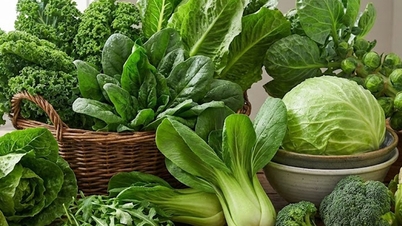






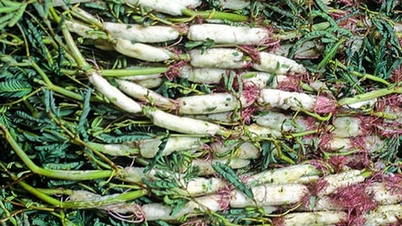
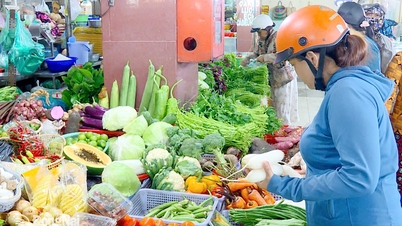







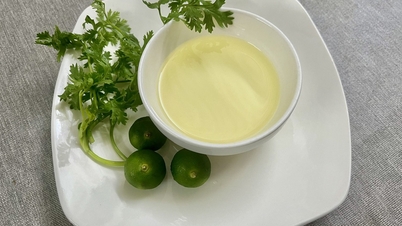
















![[Video] Protecting World Heritage from Extreme Climate Change](https://vphoto.vietnam.vn/thumb/402x226/vietnam/resource/IMAGE/2025/12/03/1764721929017_dung00-57-35-42982still012-jpg.webp)




































































Comment (0)